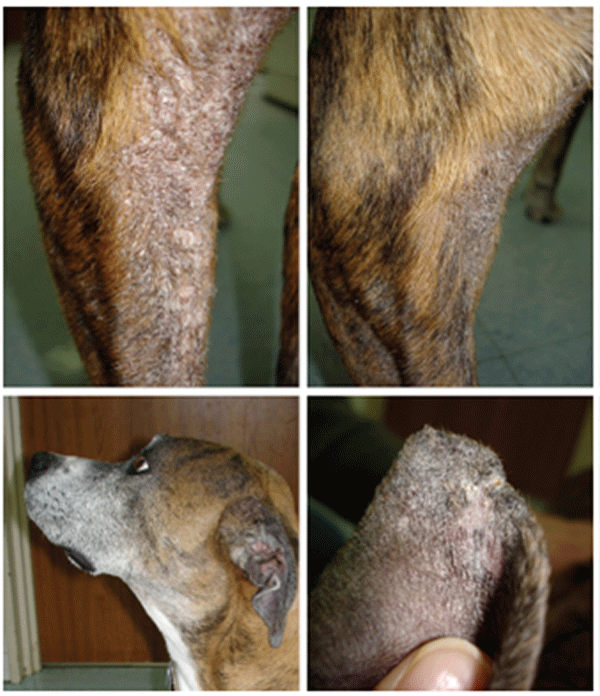Volume 16, Number 12—December 2010
Letter
Imported Leishmaniasis in Dogs, US Military Bases, Japan
Figure A1

Figure A1. Animal 1 with alopecic, pruritic, and crusty skin lesions mainly around the face, head, margins of ear pinnae, cranial aspect of the elbows and forearms, and caudal aspect of the hind legs. The lateral aspect of the left hind leg before treatment (A) and after treatment (B) (ketoconazole and then allopurinol for 3 months). The lateral aspect of the face (C) and the inner aspect of the left ear pinna (D) after the same treatment.
Page created: August 28, 2011
Page updated: August 28, 2011
Page reviewed: August 28, 2011
The conclusions, findings, and opinions expressed by authors contributing to this journal do not necessarily reflect the official position of the U.S. Department of Health and Human Services, the Public Health Service, the Centers for Disease Control and Prevention, or the authors' affiliated institutions. Use of trade names is for identification only and does not imply endorsement by any of the groups named above.